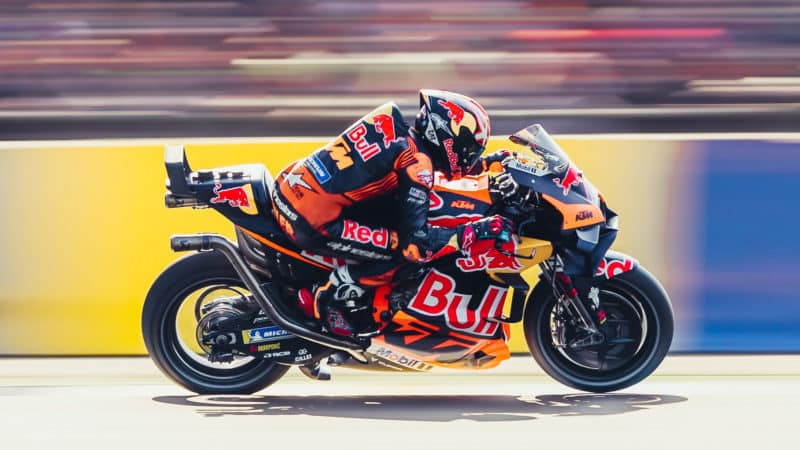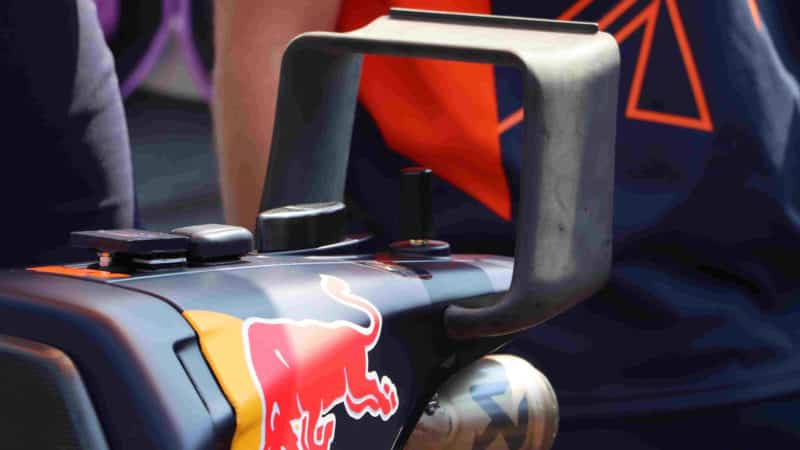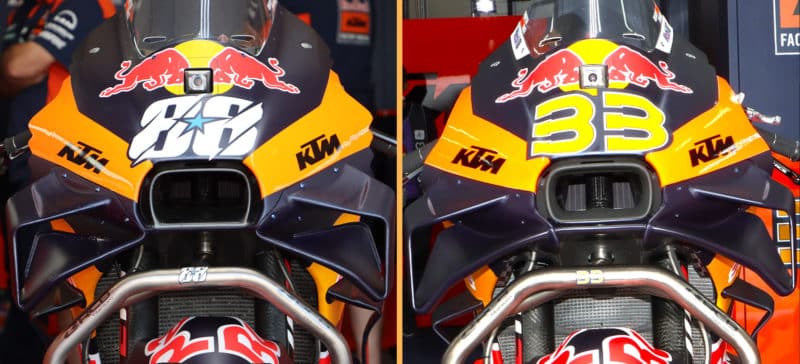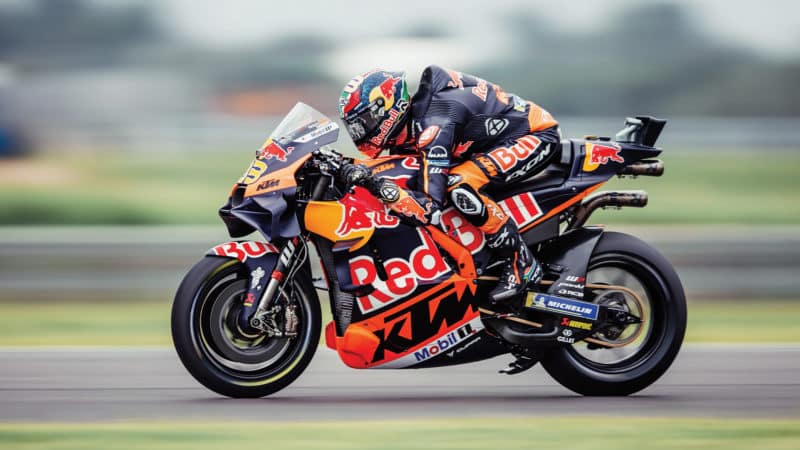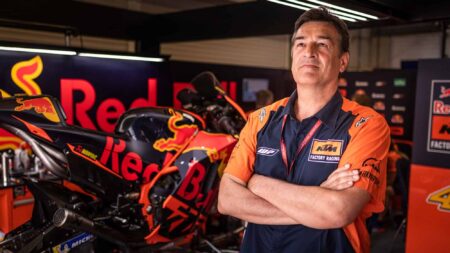And in which attitudes do you test the bike? Presumably, you need to go from upright to maximum lean and pitching forward and back…
You can do many things with the bike in the wind tunnel, but it’s quite difficult to have accurate measurements for these complex load cases [the distribution of forces] and also quite difficult to analyse.
So it’s much easier to simulate all these different load cases in CFD. Then the wind tunnel is more about validating the CFD. It all depends which areas you’re interested in, or where you’ve found some mismatches; then you try to replicate that in the wind tunnel and validate things.
Do you use your MotoGP riders in the wind tunnel or mannequins of your riders?
We work with riders.
Presumably you can’t use Brad Binder, Jack Miller and your GASGAS riders all the time, so do you have doppelgängers?
Yes, we do, but when we bring our riders to the wind tunnel it’s more about individual set-up, with their leathers and other riding equipment, plus things like stability, which can be quite difficult to measure but are very easy for the riders to understand.
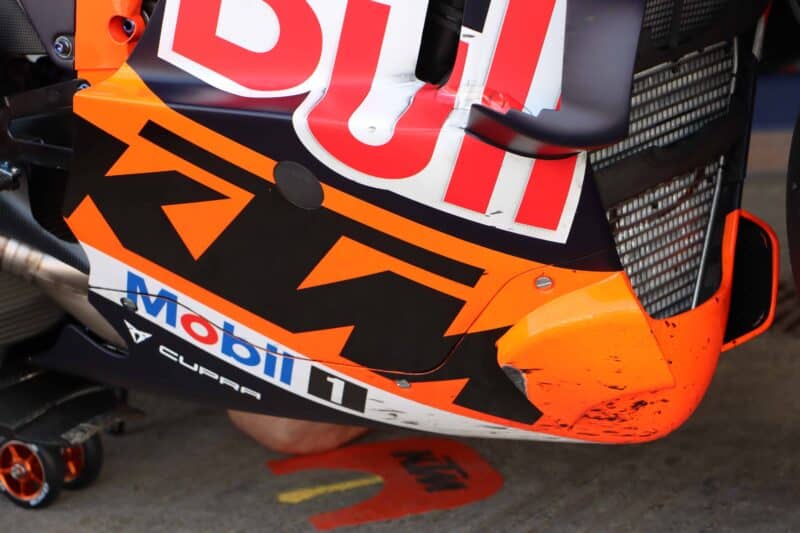
KTM’s latest slab-sided lower fairing and diffusers must be low to the ground to create so-called ground effect, which creates more grip. Look carefully and you’ll see that at Jerez the diffusers got too low!
Oxley
This year’s RC16 fairing is fitted with diffusers, which are smaller than Ducati’s, so much effect do they have?
I don’t see them as separate components or add-ons. They are part of the concept of how we’ve shaped the fairing and they are big enough to control the airflow according to the fairing shape.
To give you an example, we also had some fairing options which created the same effect without the diffusers. The thing is to get the flow you want and how you do that is up to the creativity of the engineers.
Do your diffusers create a low-pressure area?
Not directly, no.
But the slab-side fairing does create some ground effect?
When you want to use ground effect you need your aerodynamic body close to the ground and you need to control the airflow around it. That’s what the diffusers do – they clean up the flow, make sure it goes where we want it and they make the flow stable.
Last year you struggled with turning, forcing riders to use longer, more rounded lines, so has this new aero helped in this area?
In the end it’s the package of the whole fairing, but, yes, I do think we’ve made a step with the fairing.
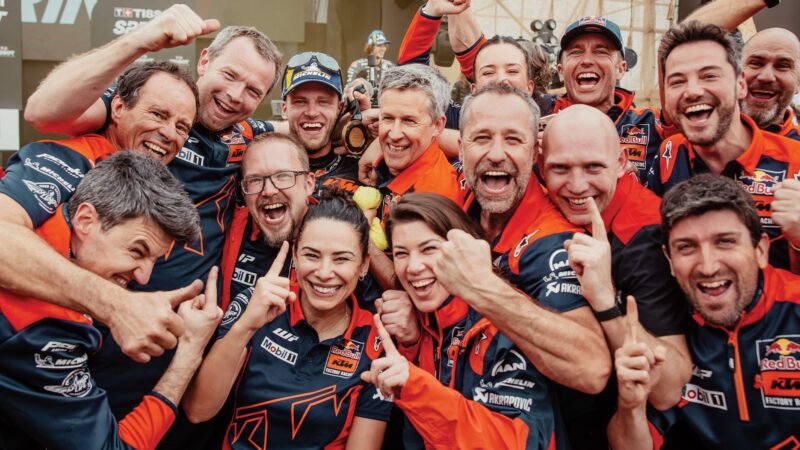
Risse (wearing glasses, immediately in front of Binder) and the rest of the KTM crew celebrate Binder’s sprint race victory in Argentina
KTM/Polarity/Photo
You work in Toyota’s wind tunnel in Cologne, right?
This I cannot say.
All this aero – downforce and ground effect – must increase mid-corner forces, so does it affect how stiff you make the RC16’s chassis?
During the last few years aero development has changed a lot how the rider uses the bike, how we set up the bike and what kind of forces we have at what moment. So globally, I’d say, yes, but talking particularly about mid-corner, I don’t think so.

